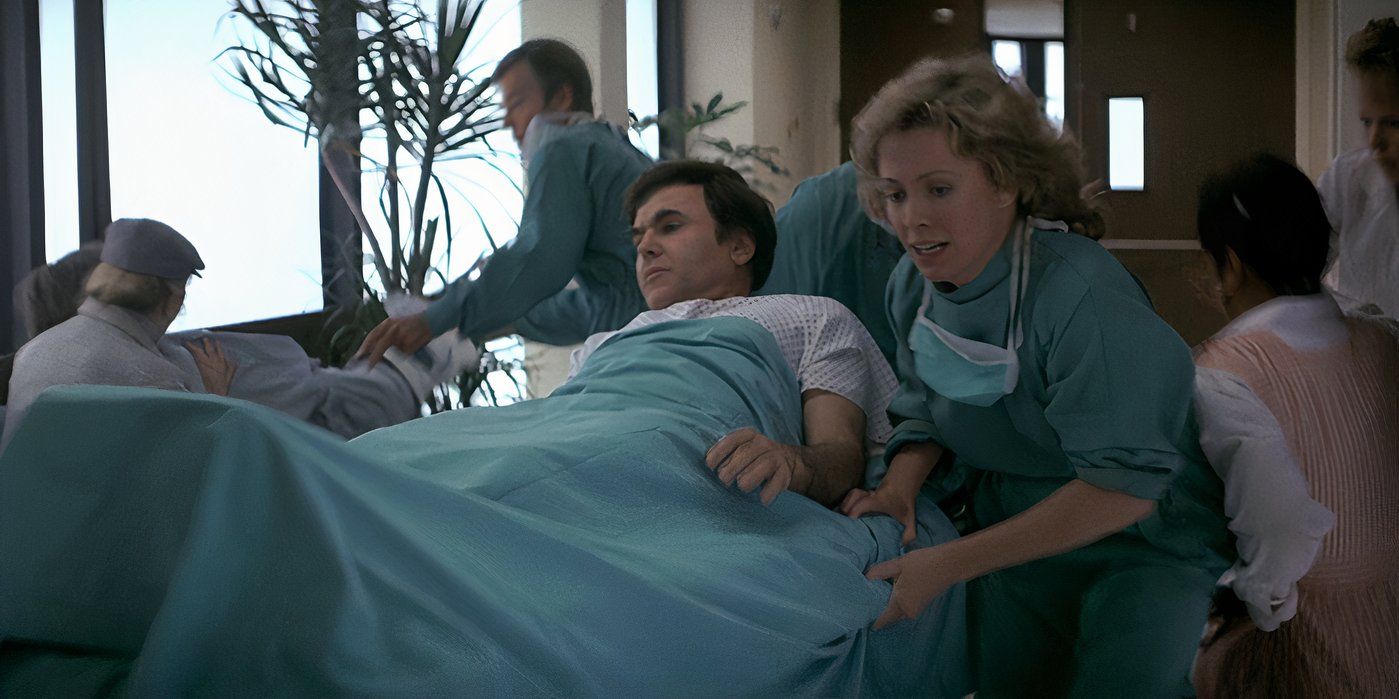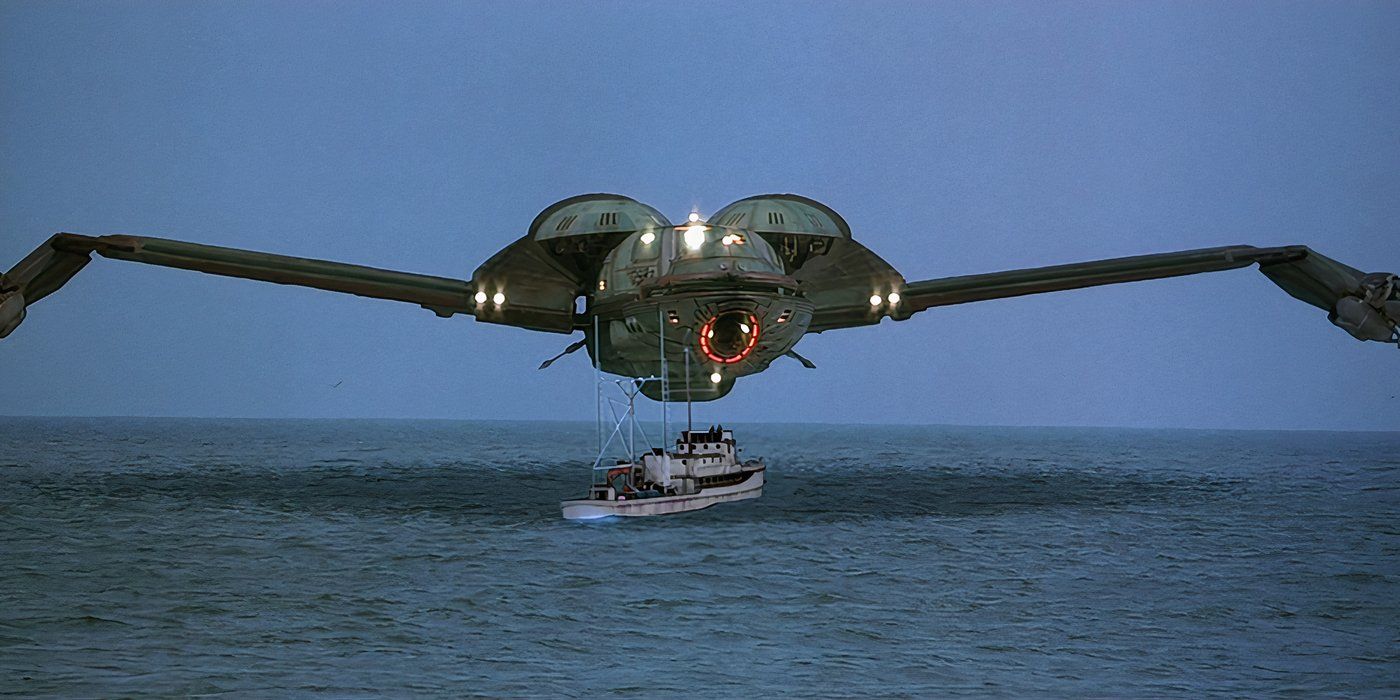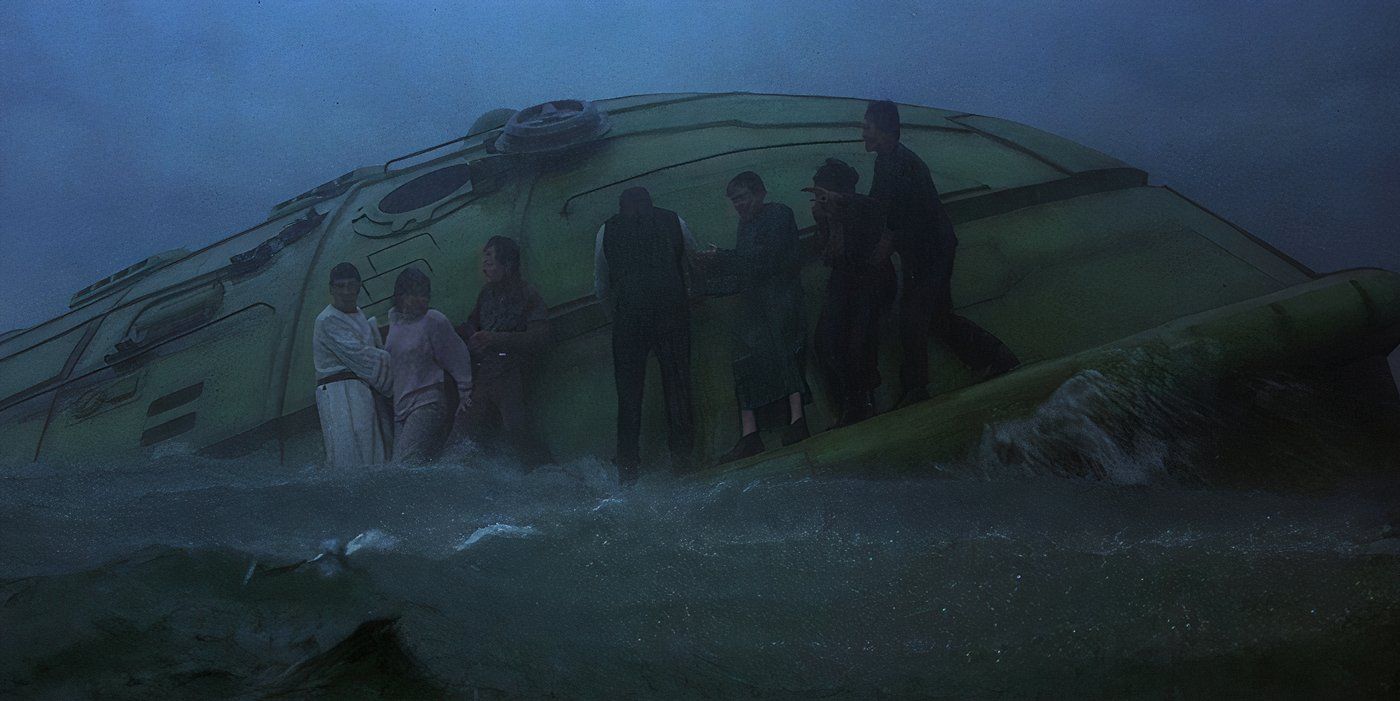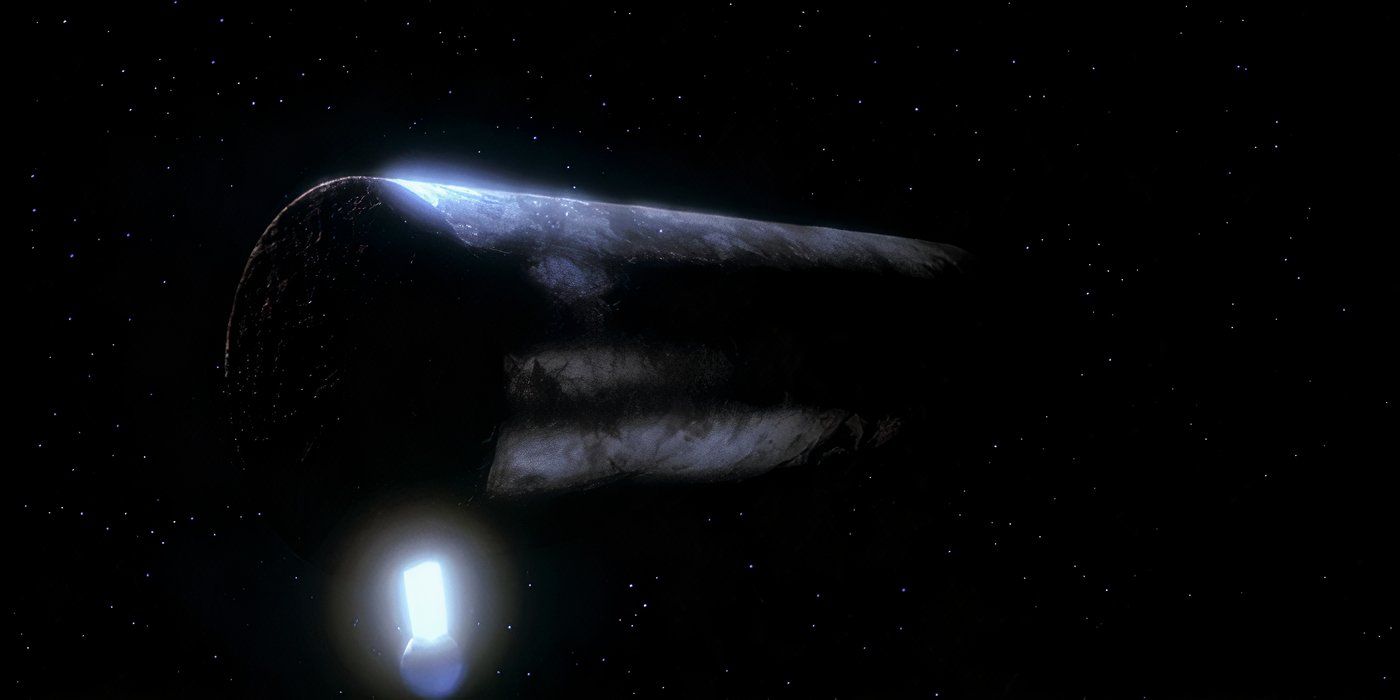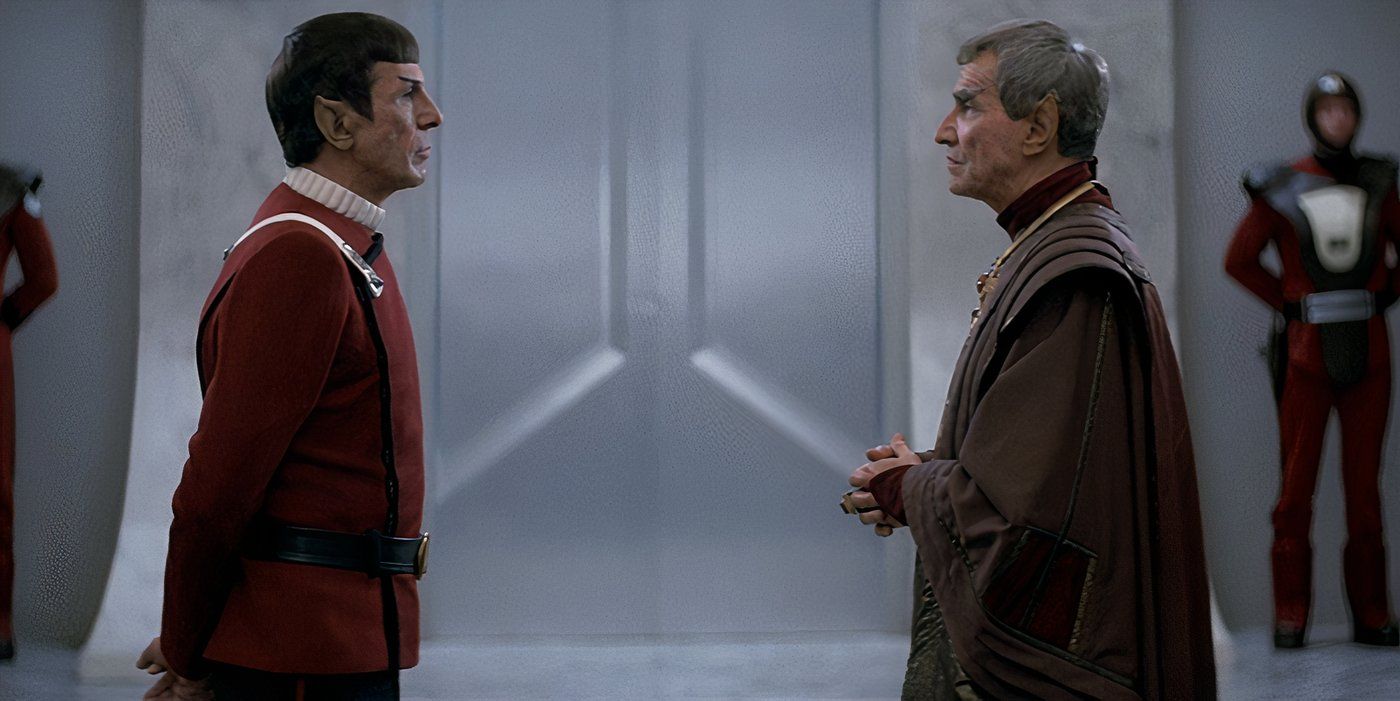Star Trek IV: The Voyage Home was the last time Admiral James T. Kirk (William Shatner) and the crew of the USS Enterprise saved Earth by bringing two humpback whales to the 23rd century. Directed by Leonard Nimoy, Star Trek IV concluded what has become known as the 'Genesis Trilogy,' which began with Star Trek II: The Wrath of Khan and continued in Star Trek III: The Search for Spock. A mainstream crowdpleaser, Star Trek IV earned $109 million in 1986 and was the highest-grossing Star Trek movie until J.J. Abrams' Star Trek reboot in 2009.
The first Star Trek movie to feature time travel, Star Trek IV sends Admiral Kirk and his former Enterprise crew back to 1986 San Francisco to enact an insane scheme. As a mysterious probe threatens to destroy Earth in the 23rd century, Kirk and friends must transport humpback whales to the future in the hopes that they can communicate with and stop the probe. Kirk and Spock (Leonard Nimoy) enlist the help of marine biologist Dr. Gillian Taylor (Catherine Hicks), who cares for humpback whales named George and Gracie at the Cetacean Institute.
Meanwhile, the rest of the USS Enterprise's crew has to construct a tank aboard their hijacked Klingon Bird-of-Prey that can hold the whales. Simultaneously, the time-tossed Starfleet heroes have to find a nuclear power source to ignite the dilithium crystals of their starship's warp drive. Star Trek IV is a wildly entertaining romp and is the only Star Trek movie where no one dies. Here's how Kirk and his friends saved the future with their time-traveling whales, and what happened next.
Admiral Kirk & His Crew Solved 3 Problems At The End Of Star Trek IV
Chekov & The Whales Needed Rescue & How To Get Back To The 23rd Century
The next problem Kirk and friends faced was rescuing the humpback whales, which were released into the wild by the Cetacean Institute without Gillian's knowledge. Dr. Taylor beamed aboard Admiral Kirk's Klingon Bird-of-Prey, and they located George and Gracie at sea as they were attacked by a whaling ship. When the Bird-of-Prey decloaked, shocking the poachers, Kirk had the whales beamed aboard securely.
Unfortunately, a subplot where Mr. Sulu (George Takei) would meet his 20th-century ancestor in San Francisco had to be cut.
An idea to show dialogue between the humpback whales and the probe was wisely omitted by director Leonard Nimoy in order to preserve the "mystery."
Releasing George and Gracie into the sea, the humpback whales were able to communicate with the Whale Probe. Satisfied, the alien vessel returned from whence it came. Earth was saved, thanks to Admiral Kirk, the former crew of the USS Enterprise, Dr. Gillian Taylor, and their humpback whales.
Admiral Kirk Is Demoted Back To Captain Of The Enterprise
"My Friends, We've Come Home"
After saving Earth, Admiral Kirk and the crew of the USS Enterprise are called to a hearing by the United Federation Council to face charges for the many crimes Kirk and they committed in Star Trek III: The Search for Spock to rescue Spock from the Genesis Planet. This includes Kirk's willful destruction of the Starship Enterprise to keep it from falling into Klingon hands. In gratitude for their heroism in saving Earth, all charges were dropped except one directed at Admiral Kirk: disobeying a superior officer.
Kirk was still ranked Captain when he appeared in Star Trek Generations.
Kirk would command the USS Enterprise-A in Star Trek V: The Final Frontier and Star Trek VI: The Undiscovered Country before the Enterprise-A was decommissioned.
After Spock's katra and body were unified, the Vulcan hero still needed months to regain his mental acuity. Further, Spock's human mother, Amanda Grayson (Jane Wyatt), urged him not to ignore his feelings. Throughout Star Trek IV, Spock silently wrestled with his Vulcan logic and his resurgent humanity. It was successfully "guessing" the correct equation for warp travel back to the 23rd century that restored Spock's full confidence so that he was himself again. Hence, Spock asked Sarek to tell his mother, "I feel fine." For the rest of his Star Trek appearances, Spock would indeed be fine.
What Happened To Dr. Gillian Taylor & Her Humpback Whales
Star Trek: Prodigy Gives An Update On Gillian's Whales
Dr. Gillian Taylor permanently left the 20th century and traveled to the 23rd century with Admiral Kirk and his crew. As Taylor told Kirk, she is a whale biologist in an era when humpback whales were extinct before they brought George and Gracie to the future. Gillian joined a research ship to keep tabs on her whales and any future whales that will be born. Unfortunately, despite her promise to "find" Kirk, Dr. Gillian Taylor isn't seen in Star Trek again.
However, Dr. Gillian Taylor's work with whales benefited Starfleet. In the 24th century, starships like the USS Enterprise-D in Star Trek: The Next Generation and the USS Cerritos in Star Trek: Lower Decks use dolphins and Beluga whales in Cetacean Ops for starship navigation. Star Trek: Prodigy's USS Voyager-A also has Cetacean Ops that houses a humpback whale named Gillian, named for Star Trek IV's heroine.
Star Trek IV Made Starship Captain History
Leonard Nimoy's Movie Introduced Star Trek's First Female Captain
Star Trek IV: The Voyage Home made history by introducing the first female starship captain seen on-screen, 20 years after Star Trek: The Original Series premiered. Early in Star Trek IV, Madge Sinclair appears as the unnamed Captain of the USS Saratoga. Sinclair's Captain preceded Kate Mulgrew's debut as Captain Kathryn Janeway on Star Trek: Voyager by nine years, although Mulgrew is the first female Captain to lead a Star Trek TV series.
Another notable cast member of Star Trek IV: The Voyage Home is Brock Peters, who plays Admiral Cartwright. In Star Trek VI: The Undiscovered Country, Cartwright is revealed as a xenophobe and a traitor conspiring to prevent peace between the Federation and the Klingon Empire. Brock Peters then joined Star Trek: Deep Space Nine as Joseph Sisko, the father of Captain Benjamin Sisko (Avery Brooks). Star Trek IV: The Voyage Home impressively has far-reaching implications that make Star Trek better.
